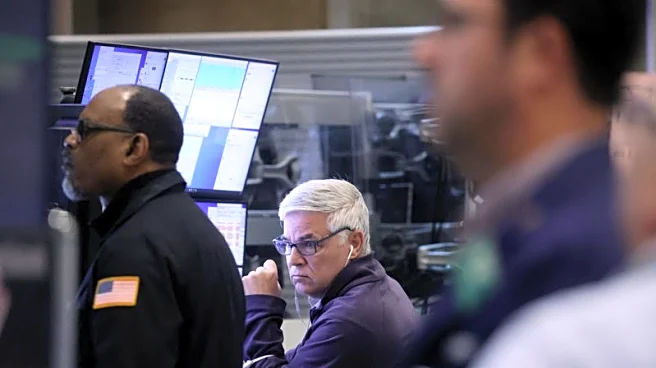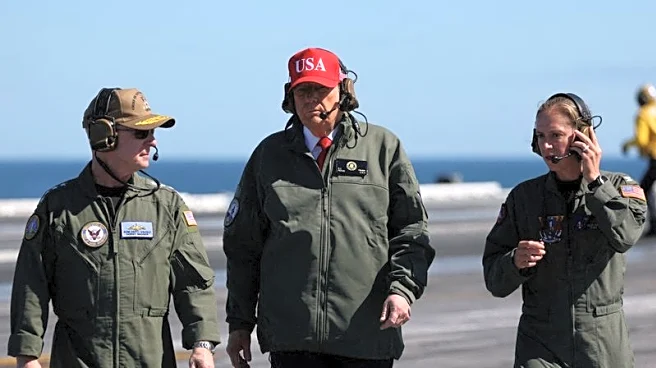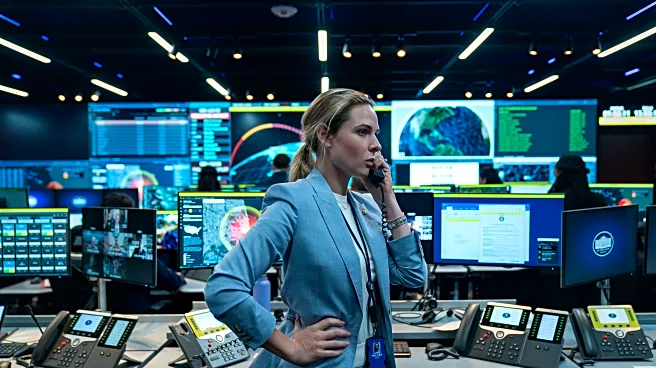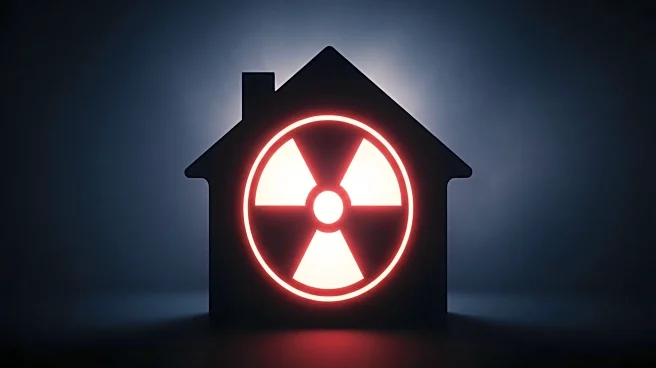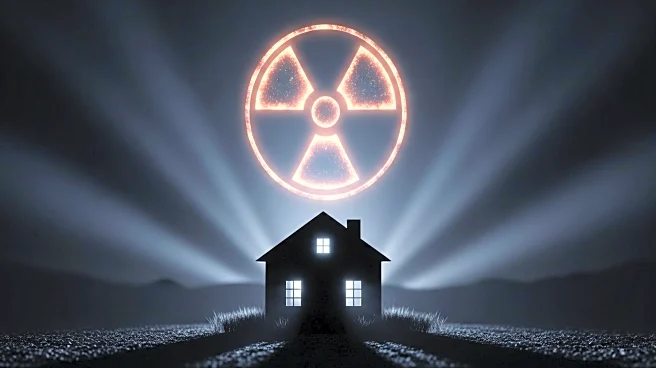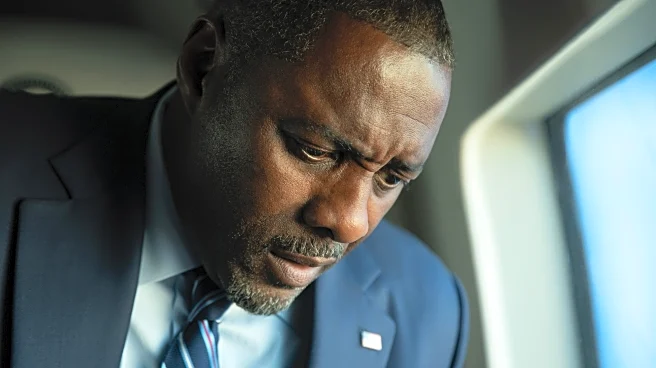What is the story about?
What's Happening?
Kathryn Bigelow's latest film, 'A House of Dynamite,' presents a gripping narrative centered around the sudden threat of a nuclear missile heading towards the U.S. mainland. The film, which opens in theaters before streaming on Netflix, is structured in three parts, each offering a different perspective on the unfolding crisis. The story begins with Captain Olivia Walker, played by Rebecca Ferguson, who discovers the missile's launch from a military base in Alaska. As the missile heads towards Chicago, the film explores the frantic efforts of military and government officials to respond to the threat. The narrative revisits the same events from the viewpoints of National Security Advisor Jake Baerington and the President, portrayed by Idris Elba. Despite its intense premise, the film's repetitive structure dilutes its initial impact, though it remains a testament to Bigelow's skill in crafting real-time thrillers.
Why It's Important?
The film taps into contemporary anxieties about nuclear warfare, a theme that has seen a resurgence in cinema with recent films like 'Oppenheimer.' By depicting the rapid escalation from normalcy to crisis, 'A House of Dynamite' underscores the fragility of peace in a nuclear-armed world. The film's portrayal of government and military responses highlights the complexities and potential inadequacies of existing protocols in the face of such threats. This narrative could influence public discourse on nuclear policy and preparedness, emphasizing the need for robust strategies to prevent and respond to nuclear incidents. The film's release also contributes to ongoing cultural conversations about global security and the role of cinema in reflecting and shaping societal fears.
What's Next?
As 'A House of Dynamite' reaches audiences, it may spark discussions among policymakers, security experts, and the public about the current state of nuclear deterrence and crisis management. The film's depiction of a near-catastrophic event could lead to calls for reviewing and updating national security protocols. Additionally, the film's reception may influence future cinematic explorations of similar themes, potentially inspiring filmmakers to tackle complex geopolitical issues with renewed urgency and creativity.
Beyond the Headlines
The film's narrative structure, which revisits the same events from multiple perspectives, invites viewers to consider the subjective nature of crisis management and decision-making. This approach highlights the diverse motivations and pressures faced by individuals in positions of power, offering a nuanced exploration of leadership under duress. The film also raises ethical questions about the responsibilities of those in command during existential threats, prompting audiences to reflect on the moral dimensions of military and governmental actions in high-stakes scenarios.
AI Generated Content
Do you find this article useful?


